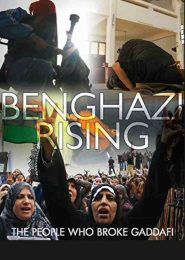The World at War (1973)
In the sepia-toned corridors of memory, where echoes of conflict reverberate, there exists a monumental documentary—a 26-episode odyssey that transcends time and space. The World at War, produced in 1973, stands as a testament to the indomitable human spirit during the cataclysmic upheaval of the Second World War.
The Canvas: At a staggering cost of £900,000 (equivalent to £11,100,000 in 2020), The World at War was the most expensive factual series ever created. Its canvas stretched across continents, capturing the agony and resilience of soldiers, civilians, and victims alike. Narrated by the venerable Laurence Olivier, it wove a tapestry of war, suffering, and survival.
The Mosaic of Voices: The documentary’s brilliance lay in its mosaic of voices. From SS officers to Jewish survivors, it painted a vivid portrait of the Holocaust—the machinery of hatred, the gas chambers, and the haunting eyes of those who bore witness. It dissected the rise of fascism, revealing the insidious roots that led to the Final Solution. The pixels on screen became conduits for memory, bridging the chasm between then and now.
The Human Cost: The World at War didn’t merely chronicle battles and strategies; it delved into the human psyche. It whispered secrets of sacrifice, fear, and camaraderie. We glimpsed the trenches, the beaches of Normandy, and the scorched earth of Stalingrad. We stood alongside concentration camp inmates, their hollow faces etched with despair. The war wasn’t just a geopolitical clash; it was a collision of souls.
The Studio Wars: Behind the scenes, battles raged. Fox, the network that birthed the series, wielded its editorial scalpel. Episodes aired out of order, schedules wavered, and the show faced cancellation threats. Yet, like a phoenix, The World at War persisted. Its creators fought for authenticity, refusing to sanitize history. The pixels on screen bore witness to their struggle.
Legacy and Reflections: The World at War isn’t a relic; it’s a living memory. It reminds us that war isn’t distant—it’s etched in our collective DNA. As the world grapples with new conflicts, we revisit this chronicle. We see the echoes of intolerance, the rise of demagogues, and the fragility of peace. The documentary becomes a mirror, urging us to remember, to learn, and to prevent history from repeating itself.
The Final Frame: As the credits roll, we’re left with a paradox: the costliest factual series ever made, yet priceless in its impact. It’s a requiem for lost lives, a hymn for resilience, and a plea for humanity. In this celluloid cathedral, we light candles for the fallen, vowing never to forget.
And so, The World at War remains—an eternal flame against the darkness of forgetting.




